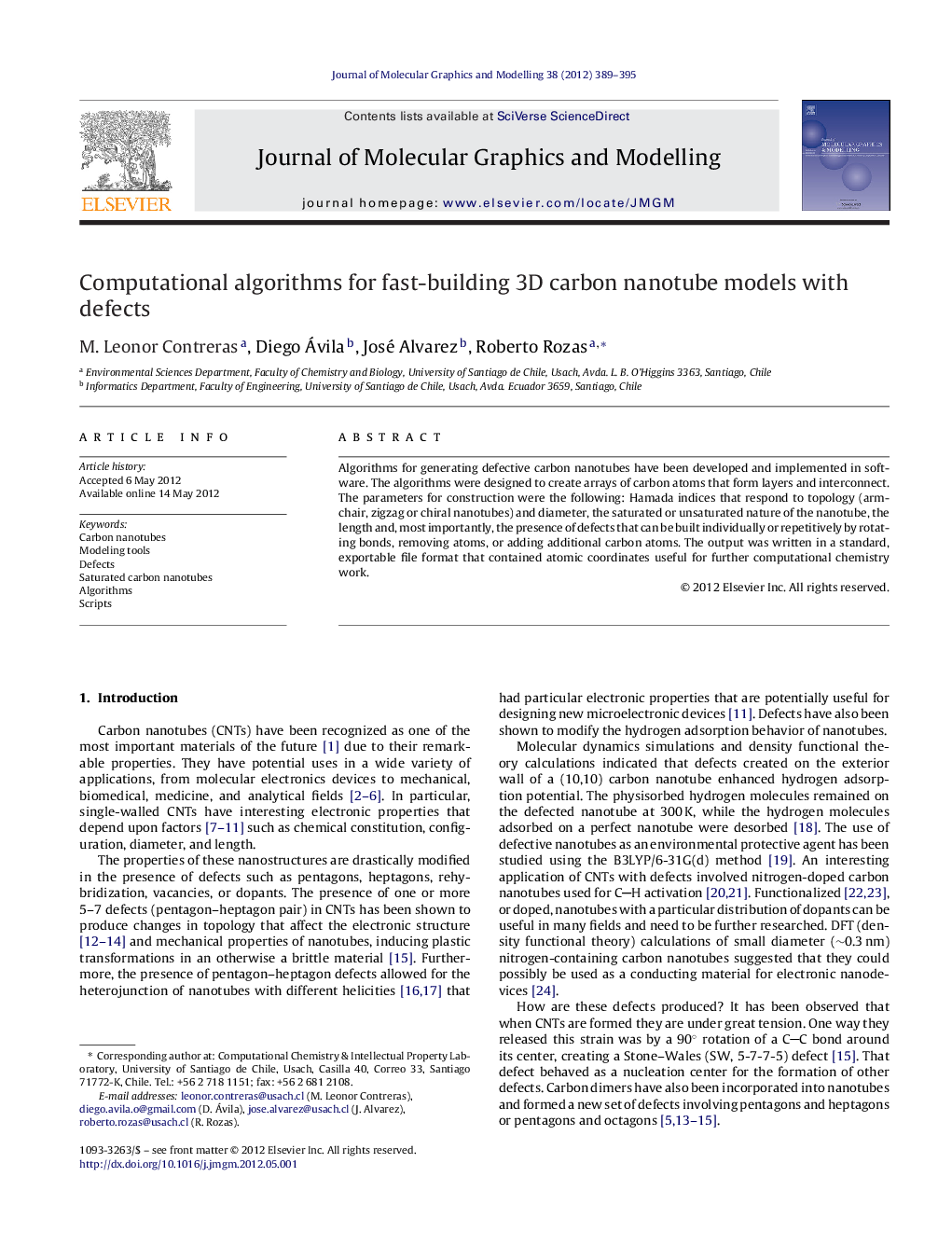| Article ID | Journal | Published Year | Pages | File Type |
|---|---|---|---|---|
| 444355 | Journal of Molecular Graphics and Modelling | 2012 | 7 Pages |
Algorithms for generating defective carbon nanotubes have been developed and implemented in software. The algorithms were designed to create arrays of carbon atoms that form layers and interconnect. The parameters for construction were the following: Hamada indices that respond to topology (armchair, zigzag or chiral nanotubes) and diameter, the saturated or unsaturated nature of the nanotube, the length and, most importantly, the presence of defects that can be built individually or repetitively by rotating bonds, removing atoms, or adding additional carbon atoms. The output was written in a standard, exportable file format that contained atomic coordinates useful for further computational chemistry work.
Graphical abstractFigure optionsDownload full-size imageDownload high-quality image (237 K)Download as PowerPoint slideHighlights► Algorithms generate sp2 or sp3 carbon nanotubes with or without defects. ► Algorithms build carbon nanotubes with repetitive or isolated defects. ► Atomic coordinates of defective nanotubes useful for molecular modeling are obtained. ► Algorithms are implemented as scripts. ► Scripts allow for visualization and geometry optimization of nanotubes.
